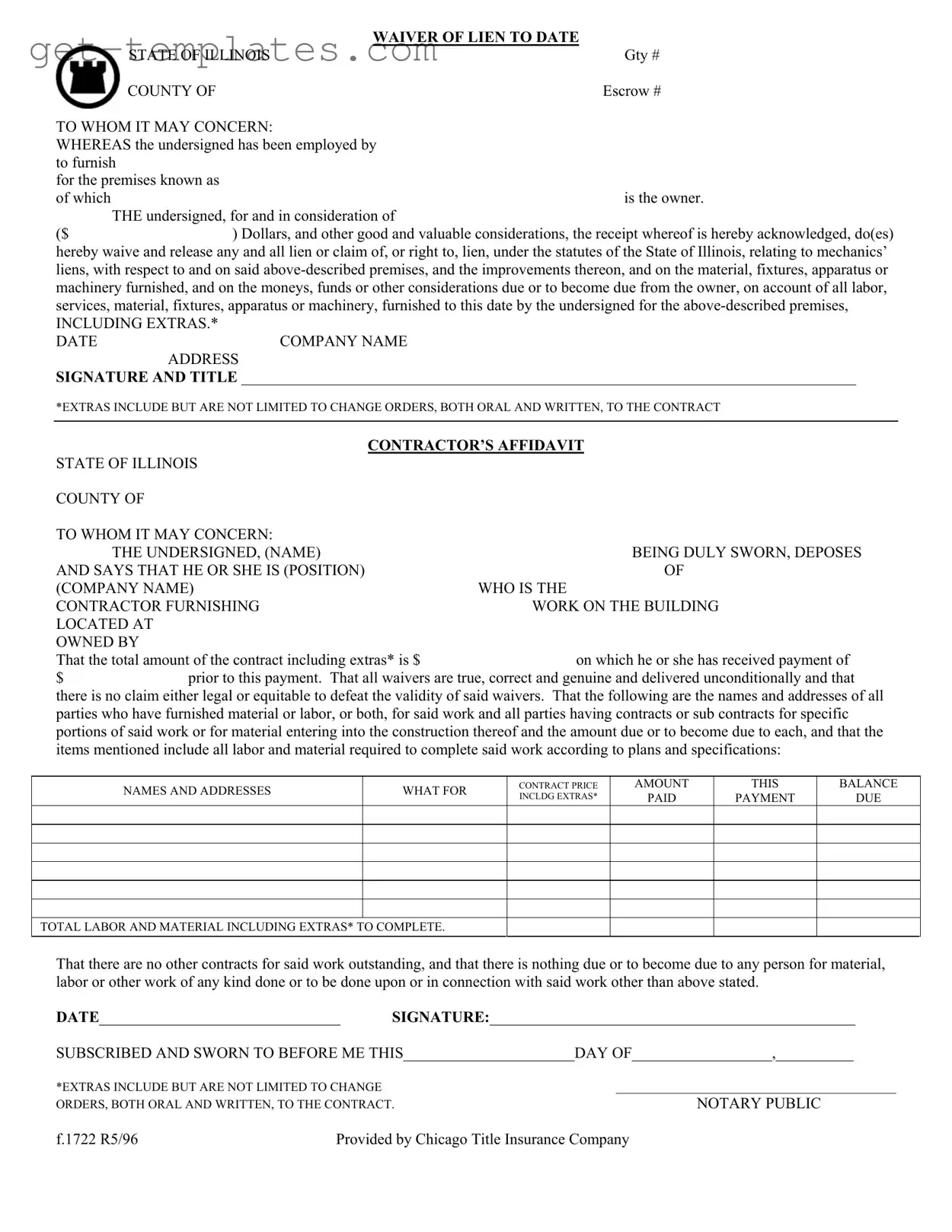The Chicago Title Waiver Format form is primarily used to waive any mechanics’ lien rights that a contractor or subcontractor may have on a property. By signing this document, the undersigned acknowledges receipt of payment and relinquishes any claim to a lien on the property for the work performed or materials supplied. This helps ensure that the property owner can proceed without the risk of future claims related to unpaid work.
Who needs to sign the waiver?
The waiver must be signed by the contractor or subcontractor who has provided labor, materials, or services to the property. This includes any parties who may have a claim to payment for work done on the property. It’s crucial that the person signing the waiver is authorized to do so on behalf of their company.
The form requires several key pieces of information, including:
-
The name of the company providing the services.
-
The property address where the work was performed.
-
The total amount of the contract, including any extras.
-
The amount already paid prior to this payment.
-
A detailed list of all parties who have provided labor or materials, along with the amounts due to each.
All this information helps to ensure transparency and accountability in the payment process.
"Extras" refer to any additional work or materials that were not included in the original contract but were necessary for the completion of the project. This can include change orders, both oral and written. It’s essential to account for these extras in the waiver to provide a complete picture of the financial obligations related to the project.
Yes, notarization is required for the Chicago Title Waiver Format form. The signature of the individual signing the waiver must be witnessed by a notary public. This step adds an extra layer of authenticity and legal validity to the document, ensuring that the waiver is recognized in legal contexts.
What happens if the waiver is not signed?
If the waiver is not signed, the contractor or subcontractor retains their lien rights. This means they can potentially file a lien against the property if they do not receive payment. For property owners, failing to obtain a signed waiver can lead to complications down the line, including the risk of having to pay for work twice or facing legal action.
Can the waiver be revoked after it is signed?
Once the waiver is signed and notarized, it generally cannot be revoked. It is a binding document that releases the lien rights. If there are disputes regarding payment or the work performed, those issues should be addressed separately through negotiation or legal channels, rather than attempting to revoke the waiver.
The Chicago Title Waiver Format form protects property owners by ensuring that all contractors and subcontractors involved in a project acknowledge receipt of payment and waive their rights to file a lien. This reduces the risk of unexpected claims against the property and provides peace of mind that all financial obligations have been settled appropriately.

